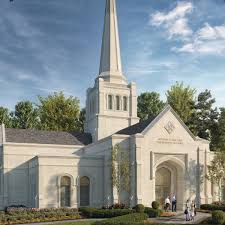Understanding the Recent Developments in the Mormon Church

Introduction
The Church of Jesus Christ of Latter-day Saints, commonly known as the Mormon Church, has been a pivotal institution in North America and beyond since its founding in the early 19th century. Recently, this religious organization has drawn significant attention due to its evolving stances on modern social issues and its outreach efforts. Understanding these developments is essential for grasping the church’s role in contemporary society.
Recent Changes and Initiatives
In 2022, the Mormon Church announced a series of significant policy changes that have been interpreted as efforts to modernize its teachings and make the church more inclusive. Among these was a notable shift regarding LGBTQ+ members. The church has been criticized in the past for its stances on same-sex marriage and LGBTQ+ rights. However, recent outreach initiatives aimed at fostering dialogue and understanding within the community have shown a willingness to adapt to changing societal norms.
Furthermore, the Mormon Church has increased its focus on humanitarian efforts globally. Reports indicate that in 2023, the church contributed over $55 million to various charities and relief efforts, including disaster relief and poverty alleviation in several countries. This commitment is seen as a way to enhance its global image while remaining faithful to its core beliefs of service and compassion.
Impact on the Community and Beyond
The implications of these changes are profound, particularly among younger members of the church, who are seeking a more progressive and accepting environment. A recent survey conducted by the Pew Research Center indicates that among younger Latter-day Saints, there is a stronger push for inclusivity, with many expressing a desire for more open discussions about sensitive issues, including mental health and personal identity.
Moreover, the church’s engagement in political discussions surrounding social issues, such as immigration laws and environmental stewardship, highlights its evolving role in both local and global contexts. As society grapples with various challenges, the Mormon Church’s responses could significantly influence its membership dynamics and public perception.
Conclusion
As the Mormon Church continues to navigate the complexities of modern society, its recent changes present both challenges and opportunities. The church’s efforts to embrace inclusivity and humanitarian work suggest a path forward that aligns its traditional beliefs with contemporary values. Observers will be keen to see how these developments affect membership engagement and the overall impact on the church’s position within broader societal dialogues. For members and those interested in religious dynamics, these shifts signal a noteworthy evolution in one of the world’s prominent religious institutions.


